-
How does it feel?
The root has an amazing smell, very aromatic and slightly camphor-like. It bears some resemblance to the scent of sweet flag root, for those who are familiar with that smell.
On tasting, it is initially sweet, moving rapidly to a pungent, warming, aromatic bitterness. This aromatic bitterness lingers on the tongue for some time after taking.
-
What can I use it for?
All manner of lung infections where a good level of expectoration can be coupled with an antimicrobial effect. It is a spasmolytic on the bronchioles and has a long tradition of use in asthma, bronchitis, whooping cough, tuberculosis and pleurisy. Added to this it is useful for a depleted system where a tonic activity is required and its action on the digestive system helps here. It is also used in remedies for intestinal worms.
-
Into the heart of elecampane
 Elecampane can be thought of as a tonic for the lungs. It is a bronchospasmolytic, expectorant and antimicrobial, making it an excellent remedy of choice for lung disease including where infection is present.
Elecampane can be thought of as a tonic for the lungs. It is a bronchospasmolytic, expectorant and antimicrobial, making it an excellent remedy of choice for lung disease including where infection is present.It has a long history of use for ‘old coughs’, especially in tuberculosis and for advanced lung conditions to help remove phlegm, such as bronchiectasis, pneumoconiosis, (disease of the lungs caused by inhalation of irritant particles such as asbestos or coal mine dust), whooping cough and bronchitis.
Elecampane can be described as a warming aromatic bitter. It promotes the secretions and movement of the gut and is especially useful in cases where there is a weak digestion with ‘low digestive fire’ – low Agni in Ayurvedic terms; where there may be poor appetite, bloating, wind or foggy-headedness.
-
Traditional uses
Elecampane is used in Western, Ayurvedic and Traditional Chinese medicine.
The herbalist John Gerard remarked that “The flowers of this herb are in all their bravery during June and July; the roots should be gathered in the autumn. The plant is good for an old cough, and for such as cannot breathe freely unless they hold their necks upright; also it is of great value when given in a loch, which is a medicine to be licked on. It voids out thick clammy humors, which stick in the chest and lungs.”
A decoction or a tincture of the root can been used as a lung tonic in all manner of cases where there is a need to support the respiratory system. It may also support the digestive system, especially in cases where there are intestinal worms.
-
Traditional actions
Herbal actions describe therapeutic changes that occur in the body in response to taking a herb. These actions are used to express how a herb physiologically influences cells, tissues, organs or systems. Clinical observations are traditionally what have defined these actions: an increase in urine output, diuretic; improved wound healing, vulnerary; or a reduction in fever, antipyretic. These descriptors too have become a means to group herbs by their effects on the body — herbs with a nervine action have become the nervines, herbs with a bitter action are the bitters. Recognising herbs as members of these groups provides a preliminary familiarity with their mechanisms from which to then develop an understanding of their affinities and nuance and discern their clinical significance.
-
Traditional energetic actions
Herbal energetics are the descriptions Herbalists have given to plants, mushrooms, lichens, foods, and some minerals based on the direct experience of how they taste, feel, and work in the body. All traditional health systems use these principles to explain how the environment we live in and absorb, impacts our health. Find out more about traditional energetic actions in our article “An introduction to herbal energetics“.
-
What practitioners say
 Respiratory system
Respiratory systemExcellent for phlegmy coughs that produce thick mucus.
Elecampane combines well with white horehound for bronchial catarrh.
It is also used in emphysema and asthma due to its ability to help the body in expelling phlegm and relaxing bronchial spasm.
Its antimicrobial effects make it a good choice in bronchitis and it has a long history of use in the management of tuberculosis.
Digestive system
Very useful where there is sluggish digestion, intolerance of fatty foods, wind and bloating, it stimulates peristalsis and the secretions of the digestive tract, perking up the appetite.
Another use when combined with anthelmintic herbs such as wormwood and pumpkin seeds is for intestinal worms.
Fatigue
Elecampane can be used in cases chronic fatigue and convalescence for its warming, tonic effects.
-
Research
 Elecampane has a long history of use in the treatment of respiratory and digestive diseases in both humans and animals, however there are some promising findings (in vitro only so far) showing the sesquiterpene lactones within the roots to possess cytotoxic and antiproliferative effects on cancer cell lines (2,3).
Elecampane has a long history of use in the treatment of respiratory and digestive diseases in both humans and animals, however there are some promising findings (in vitro only so far) showing the sesquiterpene lactones within the roots to possess cytotoxic and antiproliferative effects on cancer cell lines (2,3).There is also evidence for anti-inflammatory effects. One study showed a suppression of neutrophil-binding (a type of immune cell) binding via downregulation of Beta 2 integrin (a type of protein that allows certain immune cells to come out of circulation and into inflamed tissues) and suppression of the release of IL-8, TNF-alpha and IL-1Beta, (pro-inflammatory substances). These effects were comparable with the use of Budesonide (a steroidal inhaler used in asthma, and chronic obstructive pulmonary disease) (4).
Antibacterial (5), antifungal (6), and anthelmintic (7) activities have also been evidenced in vitro.
-
Did you know?
 There are a few theories as to how elecampane came by its Latin name Inula helenium, some of which concern Helen of Troy. One such is that the plant is said to have grown where her tears fell, another that Helen was said to have her arms full of elecampane when Paris stole her away and yet another suggests that she first used it to cure snake bites.
There are a few theories as to how elecampane came by its Latin name Inula helenium, some of which concern Helen of Troy. One such is that the plant is said to have grown where her tears fell, another that Helen was said to have her arms full of elecampane when Paris stole her away and yet another suggests that she first used it to cure snake bites.- The common name elfwort is connected to the belief in Celtic times that the herb possessed magical properties, elves were variously believed to favour the plant and also to reside within it.
- The common name of scabwort came about from use of the root, boiled well in vinegar, beaten and made into a salve with suet or oil of trotters for scabs or itch, including for use on sheep. The decoctions from the vinegar-boiled root were also applied ‘putrid sores or cankers’.
- Elecampane root is one of the ingredients used in the preparation of absinthe
- The inulin in the root is a prebiotic and so is supportive of a healthy gut flora
Additional information
-
Botanical description
Elecampane is a large perennial herb, native to Southern Europe and Western Asia and distributed across warm and temperate parts of Eurasia. Possessing large tuberous, branched rootstock and growing up to a height of 3 metres, this striking plant certainly adds character to a border. Large, bright green toothed-leaves, some up to 70 cm long, grow from furrowed and downy stems. Sunshine-yellow daisy-like flower heads appear from mid-summer with slender ray petals and a centre of apricot-coloured disc florets.
The aromatic roots are harvested in the autumn from two to three-year-old plants. It might be possible to divide a big plant, harvesting just a portion of the root.
-
Common names
- Elecampane
- Elfwort
- Scabwort
- Wild sunflower
-
Safety
To be avoided in known sensitivity to members of the Asteraceae (Daisy) family.
No safety concerns if taken within the recommended dosage range. High doses may cause nausea, vomiting or diarrhoea, likely due to the sesquiterpene lactones.
-
Dosage
Decoction of the dried and chopped root: 4.5-12g per day of the dried root
4-9 ml per day of a 1:3 strength tincture

-
Recipe
Elecampane cough syrup

Take 30g of the dried root and add to 500ml water in a pan, bring to the boil and let simmer until it has reduced by about half the volume. Strain well through muslin so you can really squeeze the root pieces for the precious extract. Allow to get to a lukewarm temperature and then combine with half as much honey and stir well.
Bottle and label with the name and date and store in the fridge. Keeps for 4-6 months.
Take a teaspoon when needed, up to 5 times daily. For Children halve the dose.Elecampane lozenges
Put 100g finely powdered root in a bowl. Add a tablespoon of honey – keep adding more until you form a doughy-mass. Now roll into small pellets between the palms of your hand and dry in a dehydrator overnight. Store in an airtight container and consume within a month.
-
References
- Buza, V et al. (2020) Inula helenium. A literature review on ethnomedical uses. Bioactive compounds and pharmacological activities. University or Agricultural sciences and veterinary medicine, 63 (1)
- Kubra, K etc al. (2018): Antioxidant and anticancer activities of extract of Inula helenium (L.) in human U-87 MG glioblastoma cell line, Journal of Cancer Research and Therapeutics, 14 (3), 658-661
- Zhang, B et al. (2018): Ethyl acetate extract from Inula helenium L. inhibits the proliferation of pancreatic cancer cells by regulating the STAT3/AKT pathway, Molecular Medicine Reports, 17, 5440-5448.
- Gierlikowska, B et al. (2020): Inula helenium and Grindelia squarrosa as a source of compounds with anti-inflammatory activity in human neutrophils and cultured human respiratory epithelium, Journal of Ethnopharmacology, 249, 112311.
- Stanojević, D et al. (2010) – In vitro synergistic antibacterial activity of Helichrysum arenarium, Inula helenium, Cichorium intybus and some preservatives, Italian Journal of Food Science, 22, 210–216.
- Stojanović-Radić, Z et al. (2020) – Anticandidal activity of Inula helenium root essential oil: Synergistic potential, anti-virulence efficacy and mechanism of action, Industrial crops and products, 149, 112373
- Urban, J., Kokoska, L., Langrova, I., Matejkova, J., (2008) – In vitro anthelmintic effects of medicinal plants used in Czech Republic, Pharmaceutical Biology, 46, 808–813.
- Greer, J M. (2017). The Encyclopedia of Natural Magic (First ed.). Woodbury, Minnesota: Llewellyn. p. 101
- Grieve, M (1931) A Modern Herbal. Tiger press. Ed 1992. ISBN 1-83-5501-249-9

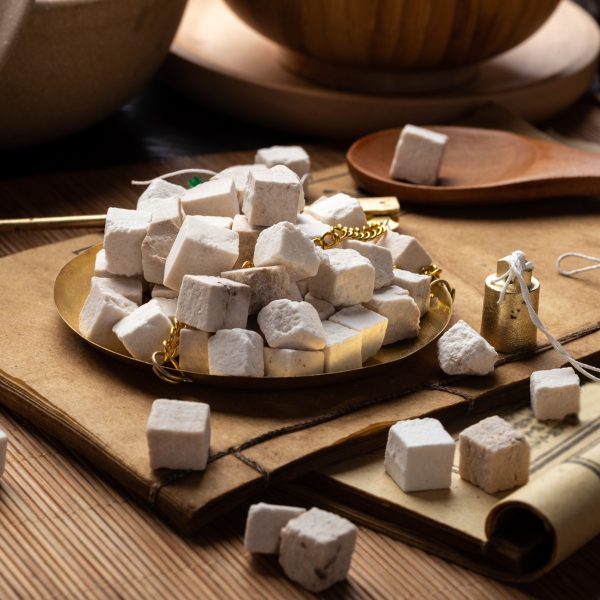
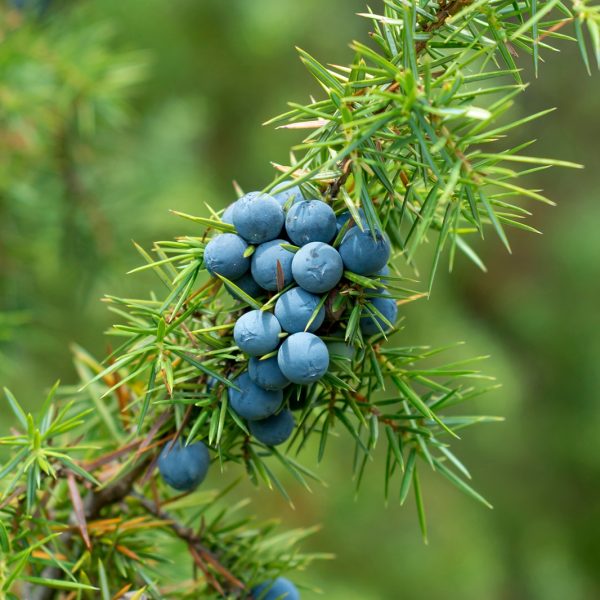












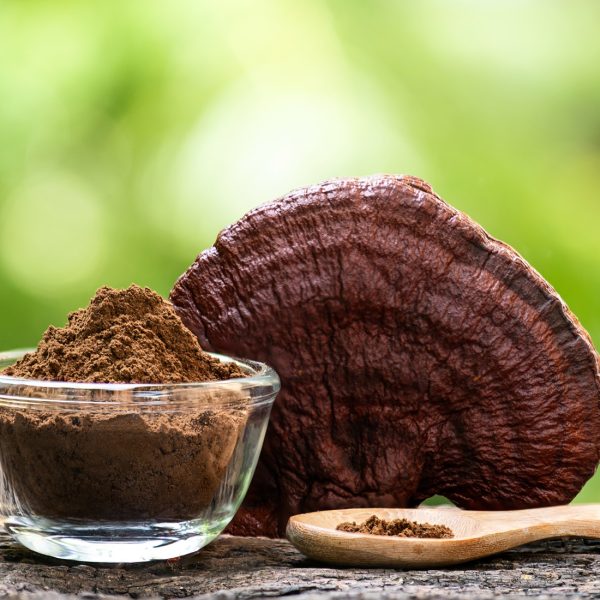

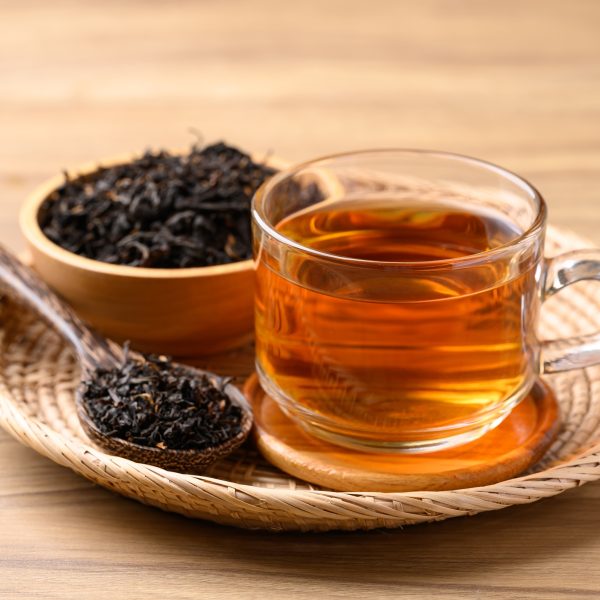
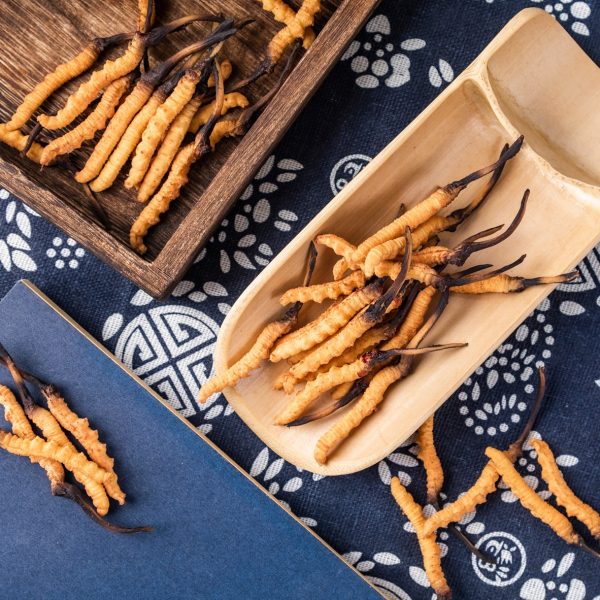







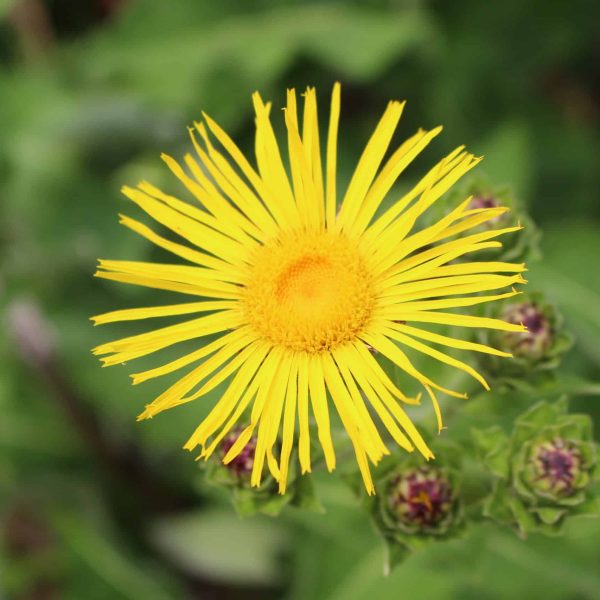

 Elecampane can be thought of as a tonic for the lungs. It is a bronchospasmolytic, expectorant and antimicrobial, making it an excellent remedy of choice for lung disease including where infection is present.
Elecampane can be thought of as a tonic for the lungs. It is a bronchospasmolytic, expectorant and antimicrobial, making it an excellent remedy of choice for lung disease including where infection is present. Respiratory system
Respiratory system Elecampane has a long history of use in the treatment of respiratory and digestive diseases in both humans and animals, however there are some promising findings (in vitro only so far) showing the sesquiterpene lactones within the roots to possess cytotoxic and antiproliferative effects on cancer cell lines (2,3).
Elecampane has a long history of use in the treatment of respiratory and digestive diseases in both humans and animals, however there are some promising findings (in vitro only so far) showing the sesquiterpene lactones within the roots to possess cytotoxic and antiproliferative effects on cancer cell lines (2,3). There are a few theories as to how elecampane came by its Latin name Inula helenium, some of which concern Helen of Troy. One such is that the plant is said to have grown where her tears fell, another that Helen was said to have her arms full of elecampane when Paris stole her away and yet another suggests that she first used it to cure snake bites.
There are a few theories as to how elecampane came by its Latin name Inula helenium, some of which concern Helen of Troy. One such is that the plant is said to have grown where her tears fell, another that Helen was said to have her arms full of elecampane when Paris stole her away and yet another suggests that she first used it to cure snake bites.





